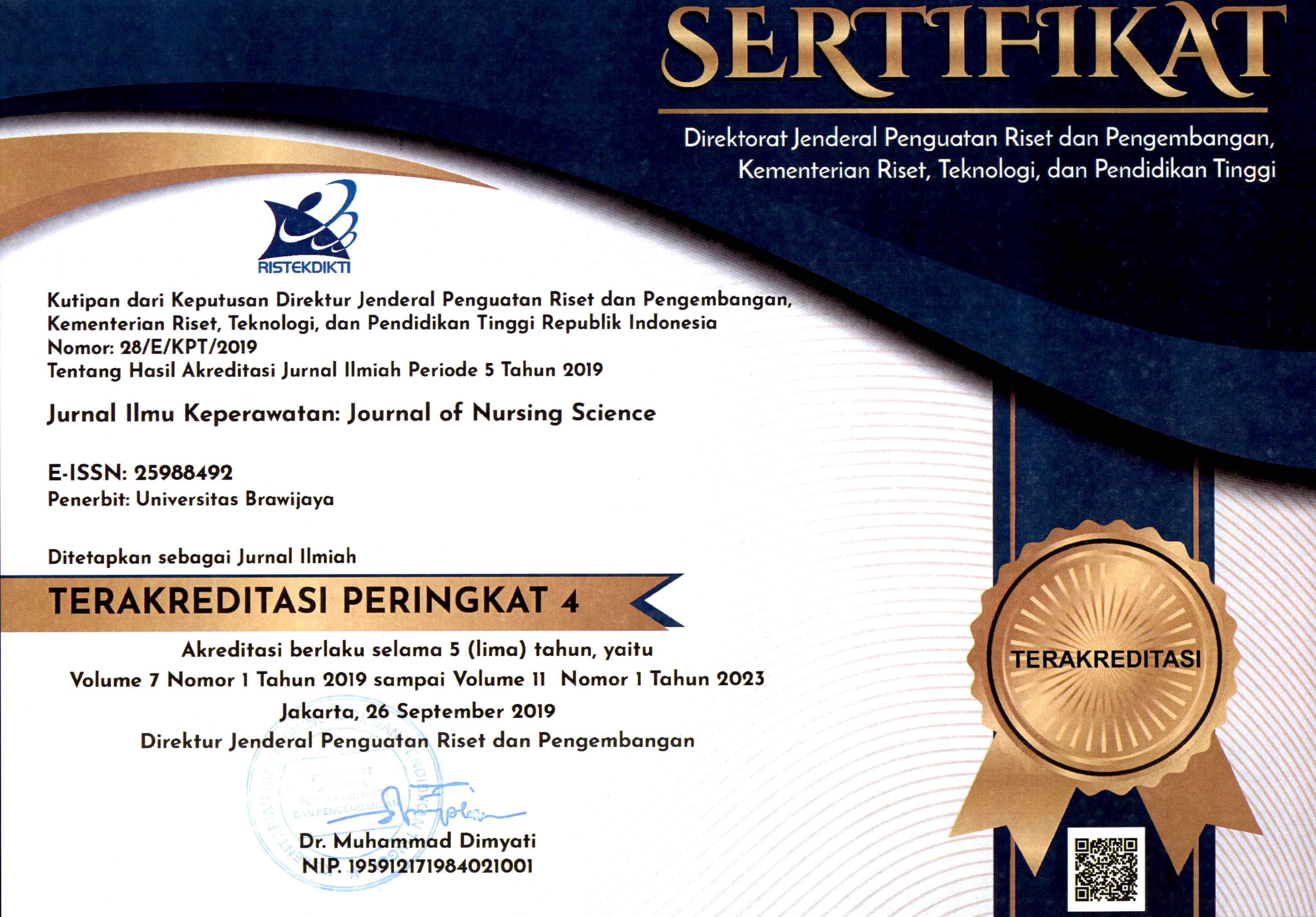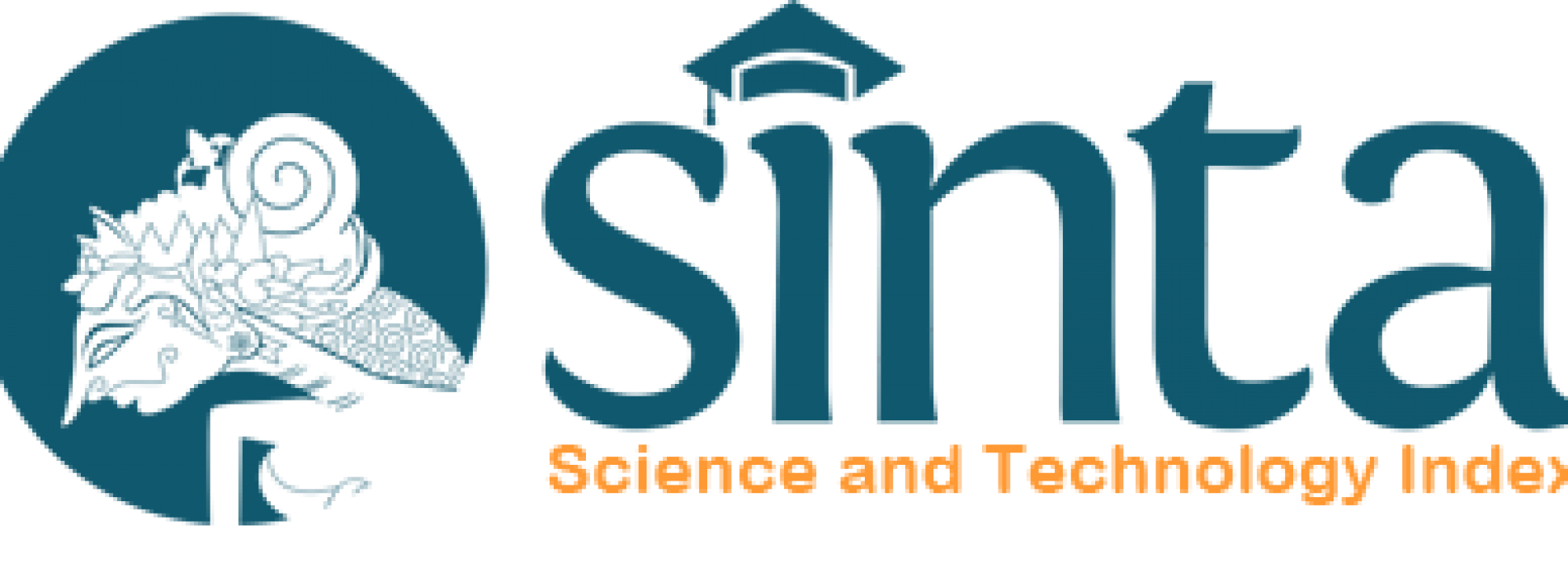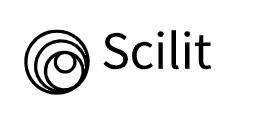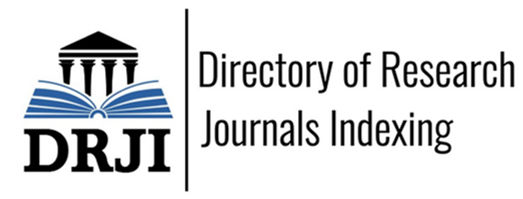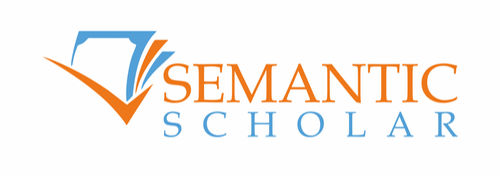EFFECTIVENESS OF SLOW DEEP BREATHING WITH ZIKIR TO DECREASING OF BLOOD PRESSURE AND IMPROVING SLEEP QUALITY IN PATIENTS WITH HYPERTENSION IN THE WORKING AREA OF GODEAN 1 PUBLIC HEALTH CENTRE OF YOGYAKARTA
DOI:
https://doi.org/10.21776/ub.jik.2018.006.02.9Keywords:
Slow Deep Breathing, Zikir, Blood Pressure, Sleep Quality, HypertensionAbstract
Hypertension is one of the deadliest diseases in the world and is currently listed as the third killer disease after heart disease and cancer. Treatment of hypertension requires a long time and requires a lot of money. Therefore, it is necessary to consider using a non-pharmacological approach that is natural to control high blood pressure and improve sleep quality. Hypertension can be controlled with non-pharmacological therapy using slow deep breathing relaxation techniques combined with zikir. Objective of this study is to determine the effectiveness of slow deep breathing with zikir of decreasing blood pressure and improving sleep quality. This study uses Quasi experimental with Comparison Group. Sampling using purposive sampling. The sample size in this study were 30 respondents with a sample of 15 respondents in the intervention group and control group. The intervention group will get a slow deep breathing treatment with remembrance while the control group will only get slow deep breathing treatment. Intervention for 14 days Measurements taken were measuring blood pressure using a sphygmomanometer and a stethoscope, while for sleep quality using the Pittburgh Sleep Quality Index (PSQI) questionnaire. Analysis used by Mann Whitney for blood pressure and Independent sample t test for sleep quality. After the intervention is given there is a decrease in blood pressure and an improving in sleep quality. Non-pharmacological intervention of slow deep breathing with zikir is more effective for decreasing blood pressure and improving sleep quality in patients with hypertension. The results of this study can be applied as non-pharmacological therapy in hypertensive patients and additional teaching materials for nursing care in hypertension.
References
- Adib, M. (2009). Cara mudah memahami dan menghindari hipertensi, jantung dan stroke. Yogyakarta: Dianloka.
- Al-Halaj, Q. M. (2014). Pengaruh zikir menjelang tidur terhadap kualitas tidur lanjut usia di panti sosial tresna wredha budi mulia 01 Jakarta Timur. Diambil kembali dari Naskah publikasi: http://repository.uinjkt.ac.id/dspace/bitstream/123456789/25630/1/Qoys%20Muhammad%20Iqbal%20Al-Halaj%20-%20fkik.pdf Diakses 24 Agustus 2018
- Anggraieni, W. N. (2014). Pengaruh terapi relaksasi zikir untuk menurunkan stres pada penderita hipertensi esensial. Jurnal Intervensi Psikologi, https://www.researchgate.net/publication/319936013_PENGARUH_TERAPI_RELAKSASI_ZIKIR_UNTUK_MENURUNKAN_STRES_PADA_PENDERITA_HIPERTENSI_ESENSIAL Diakses 1 September 2018.
- Depkes. (2018, Mei 16). Hipertensi pembunuh dian-diam, ketahui tekanan darah anda. Diambil kembali dari http://www.depkes.go.id/article/view/18051600004/hipertensi-membunuh-diam-diam-ketahui-tekanan-darah-anda.html Diakses 24 Agustus 2018
- Hanlon, J., Blackman, M., & Glick, R. (2009). Complementary and alternative medicine. USA: Hill Companies.
- Hartanti, R. D., Wardana, D. P., & Fajar, R. A. (2016). Terapi Relaksasi Nafas Dalam Menurunkan Tekanan Darah Pasien Hipertensi. Jurnal Ilmiah Kesehatan, https://media.neliti.com/media/publications/97268-ID-terapi-relaksasi-napas-dalam-menurunkan.pdf Diakses 1 September 2018.
- Havisa, R. (2014). Naskah Publikasi. Diambil kembali dari Hubungan kualitas tidur dengan tekanan darah pada usia lanjut di posyandu lansia dusun jelapan sindumartani ngemplak sleman yogyakarta: http://digilib.unisayogya.ac.id/443/1/NASKAH%20PUBLIKASI.pdf Diakses 24 Agustus 2018
- Lorentz, M. (2006). Stress and psychoneuroimmunology revisited : Using Mind Body Interventions to Reduce Stress. Alternative Journal of nursing.
- Ng M, Freeman MK, Fleeming, T., Robinson , M., Dwyer-Lindgren, L., Thomson, B., . . . Gakidou, E. (2014). Smoking prevalence and cigarette consumption in 187 countries, 1980-2012. NCBI, https://www.ncbi.nlm.nih.gov/pubmed/24399557 Diakses 24 Agustus 2018.
- Potter, P. A., & Perry, A. G. (2006). Fundamental of nursing 6th Edition. Mosby: Louis Missouri.
- Saleh, A. Y. (2010). Berzikir Untuk Kesehatan saraf. Jakarta: Zaman.
- Siburian, I. (2001). Gambaran kejadian hipertensi dan faktor-faktor yang berhubungan tahun 2001 (Analisis data sekunder SKRT 2001). Depok: Skripsi. Fakultas Kesehatan Masyarakat. Universitas Indonesia.
- Susilo, Y., & Wulandari, A. (2011). Cara Jitu Mengatasi Hipertensi. Yogyakarta: Andi Offset.
- Tortora, G., & Derrickson, B. (2009). Principles of anatomy and physiology. USA: Jhon Wiley.
Downloads
Published
How to Cite
License
Authors published in this journal agree to the following terms:
1. The copyright of the received article shall be assigned to the journal as the publisher of the journal. The intended copyright includes the right to publish the article in various forms (including reprints). The journal maintains the publishing rights to the published articles.
2. Authors may enter into separate additional contractual agreements for the non-exclusive distribution of the published journal version of the work (for example, posting it to an institutional repository or publishing it in a book), with acknowledgment of their initial publication in this journal.
3. Authors are permitted and encouraged to post their work online (e.g. in an Institutional Repository or on their website) before and during the submission process, as this can result in a productive exchange, as well as earlier and larger citations of the published work.
4. Articles and all related material published are distributed under Creative Commons Attribution-NonCommercial 4.0 International License or CC BY-NC 4.0 license.
JNSU is licensed under a Creative Commons Attribution-NonCommercial 4.0 International License or CC BY-NC 4.0 license.



